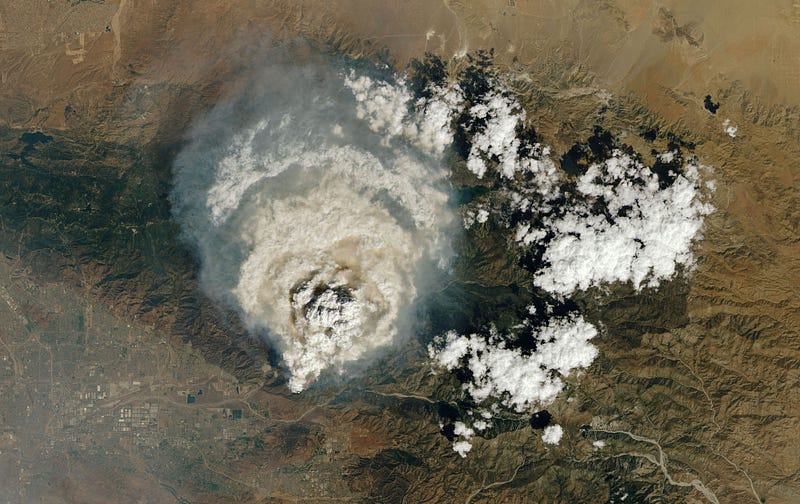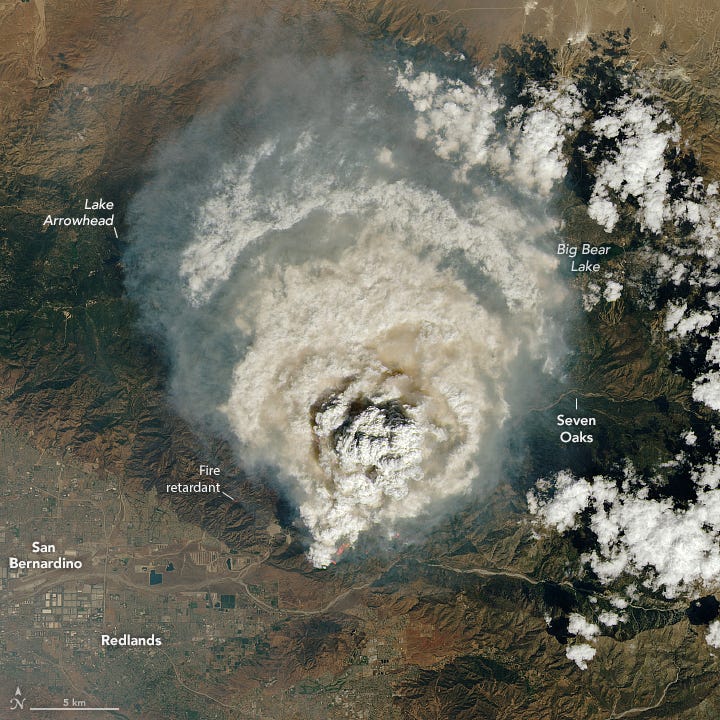Wildfires in the West: A Growing Concern Amid Climate Change
Written on
Understanding the Pyrocumulus Phenomenon
NASA's Landsat 8 satellite recently captured a striking image of a pyrocumulus cloud, which formed due to the Line Fire in Southern California on September 9, 2024. This image highlights active fire locations by utilizing shortwave-infrared light.

The complex relationship between fire and weather has become more evident as conditions worsen. Just last night, I went to bed anxious about the wildfires affecting Southern California, where my child resides. To my surprise, I woke up to a blood-red sunrise here in Arizona, mistakenly attributing it to smoke from California. However, we are facing our own fires.
The Wildfire Landscape: Fires Everywhere
As I write this, nearly sixty fires are raging across the Western United States. While our Arizona wildfires are manageable compared to the fierce infernos in Southern California, one fire has generated its own thunderstorms, leading to rain and hail. This phenomenon exemplifies how climate change has escalated fire conditions in recent years.
New research indicates that climate change is significantly drying out organic materials and is a primary factor in the increase of fire weather. Interestingly, a potential remedy is emerging: more frequent but less severe fires could mitigate the intensity of future wildfires.
How Fire Generates Thunderstorms
The immense heat from a substantial fire can create strong convection currents, propelling smoke particles high into the atmosphere. This process forms what meteorologists refer to as pyrocumulus or flammagenitus clouds, which can develop into full-fledged thunderstorms, known as pyrocumulonimbus clouds.
On September 8, residents in the Inland Empire experienced unusual weather, including hail and heavy rain, all attributed to a storm system created by smoke from the Line Fire.
Three Fires at Once: A Troubling Trend
Currently, firefighters are grappling with three major, rapidly expanding fires, a clear indication of the intensified activity brought on by climate change. The Line Fire, which ignited on September 5, has already consumed over 34,000 acres. Meanwhile, the Bridge Fire in the San Gabriel Mountains, which began on September 8, has surged to 48,000 acres, and the Airport Fire in Orange County, starting September 9, has burned more than 22,000 acres.

The previous day, a similar cloud from the Line Fire produced over 3,700 lightning strikes, according to NASA and the National Weather Service.
Quantifying the Impact of Wildfires
This wildfire season is particularly alarming. As of September 11, 2024, wildfires have already charred more land in California compared to the five-year average. The numbers are staggering:
- 2024 to September 11: 977,932 acres burned
- Five-year average through September 11: 868,803 acres
- 2023 to September 11: 253,755 acres
The overall situation is dire, with nearly 7 million acres scorched nationwide, predominantly in the West.
Factors Contributing to Wildfire Intensity
Rising temperatures and severe drought conditions, intensified by climate change, are exacerbating the scale and ferocity of wildfires. Researchers highlight the troubling trend of warmer nighttime temperatures, which hinder natural fire suppression.
"Night is the critical time for slowing a speeding fire — and wildfire’s night brakes are failing," stated Jennifer Balch, director of the Earth Lab at the University of Colorado Boulder.
Looking Ahead: Managing Wildfire Risks
Experts warn that the trend of simultaneous wildfires is likely to escalate due to climate change. As temperatures rise and conditions dry out, the risk of concurrent wildfires will increase.
Moreover, large wildfires can create conditions that foster their own rapid expansion. Fires emit dark smoke, which absorbs sunlight, raising surface temperatures and promoting further fire activity.
A potential solution lies in allowing smaller, more frequent fires. This approach could reduce the fuel load available for larger fires, as emphasized by James Gomez, a doctoral student at UC Riverside.
In light of these findings, it’s vital to manage forest areas more effectively and conduct prescribed burns to minimize the occurrence of catastrophic wildfires. Understanding how previous fires affect future risks is equally important, as noted by ecologist Claire Tortorelli.
The future of wildfire management hinges on our ability to adapt to these changing conditions and implement effective strategies to mitigate fire risks.